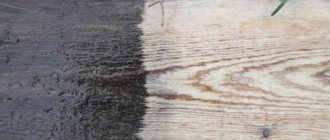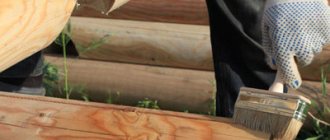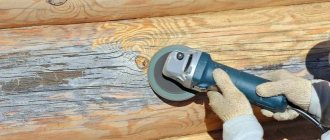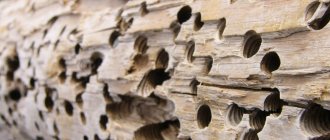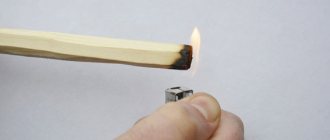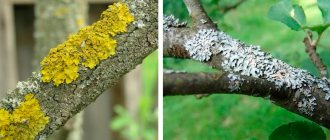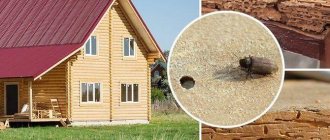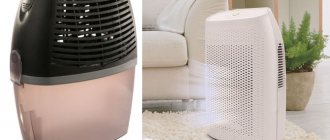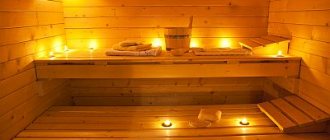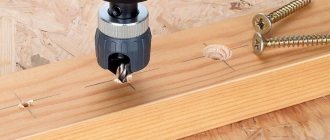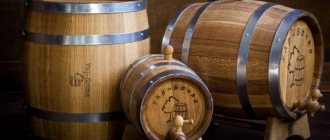By attacking wood, mold spoils its aesthetic appearance. But the main danger of the fungus is not damage to property, but its negative impact on the human body. Spores can provoke an allergic reaction and even cause mycotic pathologies. If the damage is minor, you can remove mold from wood yourself, using antiseptics or improvised means.
Causes of mold formation on wood
Before looking at how to remove mold from wood, it is important to find out why it appears. The first sign that there is fungus in the house is a change in color. A characteristic brown, blue, black, pink or white color appears on the surface of the wood. At first the spots are barely visible. And in the absence of timely treatment, they increase in size and affect large areas of the material.
Some bacteria do not destroy the texture and do not penetrate deep into the wood. But they can ruin the aesthetic appearance of wood trim, floorboards or wall cladding. There are several reasons why fungus appears on wood:
- improperly organized ventilation in the room;
- high humidity;
- sudden temperature changes;
- condensate;
- low-quality wooden material;
- infection of wood by fungi;
- contact with damp soil for a long time.
Mold fungus is dangerous not only because it multiplies quickly, but also because it has a negative impact on people and pets. If you use material contaminated with mold to build or decorate a house, the consequences can be very serious, including the complete dismantling of wooden structures.
Features when processing wood surfaces
Thanks to the film that forms on the wood, the coating is reliably protected from moisture and pests. But the problem is that it is difficult to evenly distribute the protective agent over the entire surface due to the unevenness that exists on the wood.
Due to the variety of types of wood, they are impregnated differently.
For example, it is difficult to use antiseptics on coniferous trees; also species such as ash, beech, and birch have a high level of resistance to these agents.
A lot depends on the moisture content of the wood, so you should first dry the material and only then treat it with an antiseptic.
Step-by-step removal of mold in wooden products
Elimination of consequences and prevention of further proliferation of fungal spores is carried out in several stages. How to remove mold from a wooden surface if the problem is found in a neglected state:
- Cleaning damaged areas. You will need a spatula and a chisel. Remove the top layers with a spatula. A chisel and knife are used if damage to the internal structure of the wood is detected.
- Dispose of all removed wood. It is advisable to burn all cut layers of wood.
- Washing the material. Prepare a concentrated solution of laundry soap and carefully treat cleaned wooden surfaces.
- After treatment with soapy water, the wood is allowed to dry. Then they are treated with a wood antiseptic. After disinfection, the wood is allowed to dry and the treatment of problem areas is repeated.
Important! You need to apply an antiseptic not only to areas damaged by mold, but also to areas around it. There may be spores scattered there that have not yet had time to manifest themselves.
Rules for applying protective equipment
Working with protective products for wooden surfaces is easy. However, first of all, you need to take care of your own safety - protect your skin and eyes from chemicals getting into them. To do this you will need a rubber apron, gloves, a respirator and goggles.
Surface treatment instructions:
Additional Information
In each case, the choice of composition is individual. To treat outdoor buildings (for example, gazebos, terraces), hard-to-wash solutions are used, which, if applied in accordance with the instructions, will last 30 years or more. For rooms with extreme humidity, preparations that are resistant to sudden temperature changes are needed. For ceilings, windows and doors, impregnations and paints and varnishes are needed to prevent uneven shrinkage of the material and to avoid cracking of the wood.
Fire retardant impregnations are effective, as a rule, for no more than 7 years. Then the surfaces will have to be processed again. However, the actual period of coating protection can vary greatly depending on the climate and the nature of operation.
Advice! When the time comes for re-treatment, which loses the protective properties of the surface, it is recommended to use a different composition. You should not use the same antiseptic a second time, as the effect of its use will be lower.
How to clean boards from mold
There are two ways to clean boards from mold: call a specialized service that specializes in removing infected areas or get rid of the fungus yourself. If large-scale wood damage is detected, it is better to use the services of specialists. Since such companies determine the type of disputes and select the most effective means of destruction. In addition, processing is carried out with professional equipment.
If you decide to remove the fungus yourself, a person will need to prepare tools for the work and disinfectants that destroy mold spores.
Prevention methods
The set of preventive measures will take less time than treating a simple fungus at home. Problems are easier to prevent, so it is important to ensure their ventilation in a bathhouse or wooden house.
Hydro- and vapor barrier
The main reason for the formation of pathogenic microorganisms is excessive humidity levels and the influence of steam. It is important to protect furniture and structures from this. Therefore, it is imperative to use special varnishes that protect the wood.
In a room where the humidity is always exceeded due to objective factors, for example, in a bathhouse, it is necessary to ensure a pleasant microclimate and regular ventilation.
Roof and foundation integrity
Before putting the house into operation, the roof and foundation must be covered with paints, varnishes and antiseptics. The appearance of fungus in these structures is not always noticeable, but as a result they grow and cause harm. Cleaning and application occur only on a clean surface; brushes, sprayers and rollers are used.
Vapor barrier membrane for protection against condensation
A vapor barrier membrane will protect against condensation and serve as an additional measure. The event is presented as a whole.
How to get rid of mold on a wooden surface
If the material is only slightly affected, the following will help get rid of mold:
- chisel and spatula;
- sandpaper;
- hammer;
- soft rags and fine sandpaper.
The scale of mechanical intervention depends on the depth of penetration of fungal spores. Sometimes it is enough to remove the thin top layer and then perform disinfection without severe damage to the timber.
Antiseptic
A properly selected chemical solution will destroy mold growth areas. As a rule, universal antiseptics and active fungicides are used for these purposes. The following have proven themselves well in the fight against disputes:
- Tikkurila;
- Belinka;
- Neomid.
Important! Any chosen anti-mold product is used strictly according to the instructions. In addition to the recommended dosage, it is important to pay attention to the optimal temperatures at which processing is performed.
We recommend:
How to remove sealant from clothes at home
These antiseptics do not contain dangerous chlorine compounds and volatile toxins. At the same time, they are capable of not only destroying areas of bacterial growth, but also subsequently protecting the wood from spores. In addition, there are solutions that additionally have a toning effect. This allows the lumber to retain its natural appearance.
Folk remedies
Before treating the timber against fungus and mold using professional means, you can try traditional methods of combating it. Such means were successfully used for control even before special chemical solutions appeared on the construction market. Among the most popular are the following:
- Acetic acid. Lumber is treated with acetic acid in two stages. Spraying is performed for the first time. After complete drying, wipe again with a dampened rag. This method is completely safe, but gives a short-term effect.
- Hydrogen peroxide. Carefully treat the damaged areas with peroxide and leave for 15 minutes. Then clean the surface with a metal brush. The disadvantages include the risk of losing the appearance of the material.
- Baking soda. Add water to the soda and stir thoroughly until a thick paste is obtained. The product is applied to the damaged areas and left for 30 minutes. Then the surface is cleaned with a stiff brush.
- White. The most effective and most dangerous way to destroy mold fungi. Whiteness is applied to the areas where spores have been identified and left for 15 minutes. Wash off with soap concentrate.
Important! When planning to resort to folk remedies to combat mold, you should not use highly concentrated chlorine solutions. When using such products, you must wear a protective mask and rubber gloves.
Folk remedies are not always effective, and in some cases even dangerous to human health. Therefore, it is better to give preference to modern antifungal drugs with a multicomponent composition.
Substances containing chlorine
The sensational and well-known “Domestos” or “whiteness”, other liquids containing chlorine, also help get rid of the scourge. They need to be applied temporarily to wooden surfaces with a dampened cloth or using a spray. The second option will be of better quality, since the smallest particles will better penetrate into cracks, chips and irregularities. Do not dilute the products with water - the concentrated version will deal with mold better. After some time it will begin to lighten, after which it will disappear completely. Do not wipe the walls; let them dry naturally.
How to prevent mold
After disinfection, it is important to take preventive measures. This will not only destroy all mold, but also prevent its occurrence in the future. The rules of prevention are not complicated and consist of the following steps:
- ensuring good air circulation;
- eliminating sources of high humidity. If the house has a basement, regular ventilation and heating will be required;
- maintaining stable temperature;
- annual treatment of wooden facades and finishing with a special antiseptic.
Private wooden houses are most susceptible to mold. Therefore, it is important to avoid mistakes when arranging ventilation, waterproofing and insulation. Since even with modern antiseptics, it is very difficult to completely remove mold. It is much easier to prevent it from appearing.
Rate this post
Storage, conservation of material
After drying, it is also important to properly store boards, logs, and timber. These products are distinguished by their tendency to absorb moisture; hardwoods are distinguished by this property. To preserve the material, it is placed in a stack on peppered panels, just like when drying, to create good ventilation of the room.
There are also other ways to preserve wooden products:
- Paraffinization, the paraffin is preheated, then the boards are immersed in it to prevent interaction with moisture;
- Applying heated linseed oil; the wood is placed in the oil for a certain period to ensure a penetrating effect and close the pores with the product.
Such woodworking is only possible with well-dried material; if the moisture has not completely left, it contributes to the appearance of wood fungus.
To preserve the material, it is placed in a stack on peppered panels, just like when drying, to create good ventilation of the room.
